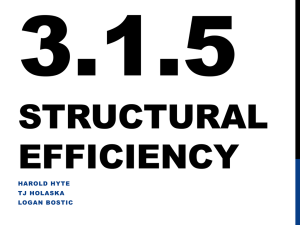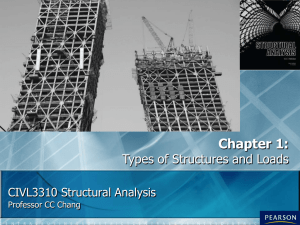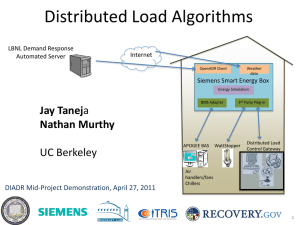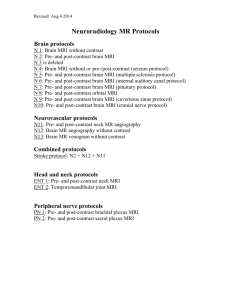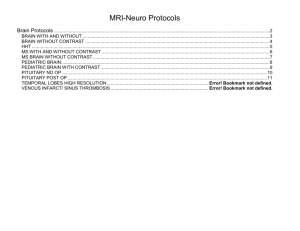Lecture 8
advertisement
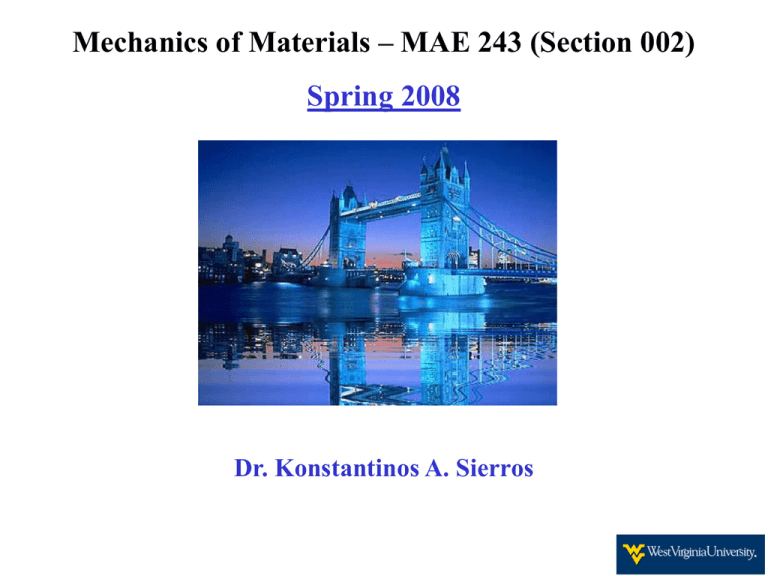
Mechanics of Materials – MAE 243 (Section 002) Spring 2008 Dr. Konstantinos A. Sierros 2.1 Introduction Chapter 2: Axially Loaded Members • Axially loaded members are structural components subjected only to tension or compression • Sections 2.2 and 2.3 deal with the determination of changes in lengths caused by loads • Section 2.4 is dealing with statically indeterminate structures • Section 2.5 introduces the effects of temperature on the length of a bar • Section 2.6 deals with stresses on inclined sections • Section 2.7: Strain energy • Section 2.8: Impact loading • Section 2.9: Fatigue, 2.10: Stress concentration • Sections 2.11 & 2.12: Non-linear behaviour 2.3: Changes in length under nonuniform conditions • A prismatic bar of linearly elastic material loaded only at the ends changes in length by: Elongation of a prismatic bar in tension FIG. 2-5 • This equation can be used in more general situations Copyright 2005 by Nelson, a division of Thomson Canada Limited 2.3: Bars with intermediate axial loads (a) Bar with external loads acting at intermediate points; (b), (c), and (d) freebody diagrams showing the internal axial forces N1, N2, and N3 FIG. 2-9 Copyright 2005 by Nelson, a division of Thomson Canada Limited • A prismatic bar is loaded by one or more axial loads acting at intermediate points b and c • We can determine the change in length of the bar by adding the elongations and shortenings algebraically 2.3: Bars with intermediate axial loads - Procedure (a) Bar with external loads acting at intermediate points; (b), (c), and (d) freebody diagrams showing the internal axial forces N1, N2, and N3 FIG. 2-9 Copyright 2005 by Nelson, a division of Thomson Canada Limited • First identify the segments of the bar. Segments are AB, BC, and CD as segments 1,2, and 3 2.3: Bars with intermediate axial loads - Procedure (a) Bar with external loads acting at intermediate points; (b), (c), and (d) freebody diagrams showing the internal axial forces N1, N2, and N3 FIG. 2-9 Copyright 2005 by Nelson, a division of Thomson Canada Limited • Then, determine the internal axial forces N1, N2, and N3 in segments 1, 2, and 3 respectively • Internal forces are denoted by the letter N and external loads are denoted by P 2.3: Bars with intermediate axial loads - Procedure (a) Bar with external loads acting at intermediate points; (b), (c), and (d) freebody diagrams showing the internal axial forces N1, N2, and N3 FIG. 2-9 Copyright 2005 by Nelson, a division of Thomson Canada Limited • By summing forces in the vertical direction we have: N1 + PB = Pc + PD => N1 = - PB + PC + PD N2 = PC + PD N3 = PD 2.3: Bars with intermediate axial loads - Procedure (a) Bar with external loads acting at intermediate points; (b), (c), and (d) freebody diagrams showing the internal axial forces N1, N2, and N3 FIG. 2-9 Copyright 2005 by Nelson, a division of Thomson Canada Limited • Then, determine the changes in the lengths of each segment: Segment 1 Segment 2 Segment 3 2.3: Bars with intermediate axial loads - Procedure (a) Bar with external loads acting at intermediate points; (b), (c), and (d) freebody diagrams showing the internal axial forces N1, N2, and N3 FIG. 2-9 Copyright 2005 by Nelson, a division of Thomson Canada Limited • Finally, add δ1, δ2 and δ3 in order to obtain δ which is the change in length of the entire bar: 2.3: Bars consisting of prismatic segments FIG. 2-10 Bar consisting of prismatic segments having different axial forces, different dimensions, and different materials Copyright 2005 by Nelson, a division of Thomson Canada Limited • Using the same procedure we can determine the change in length for a bar consisting of different prismatic segments Where; i is a numbering index and n is the total number of segments 2.3: Bars with continuously varying loads or dimensions Bar with varying cross-sectional area and varying axial force FIG 2-11 Copyright 2005 by Nelson, a division of Thomson Canada Limited • Sometimes the axial force N and the cross-sectional area can vary continuously along the axis of the bar • Load consists of a single force PB (acting at B) and distributed forces p(x) acting along the axis • Therefore, we must determine the change in length of a differential element (fig 2-11 c) of the bar and then integrate over the length of the bar 2.3: Bars with continuously varying loads or dimensions Bar with varying cross-sectional area and varying axial force FIG 2-11 Copyright 2005 by Nelson, a division of Thomson Canada Limited • The elongation dδ of the differential element can be obtained from the equation δ = (PL)/(EA) by substituting N(x) for P, dx for L and A(x) for A … and integrating over the length… integrating


